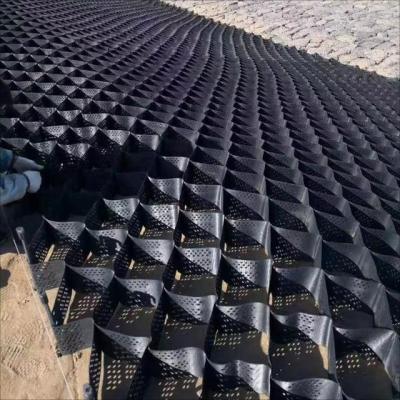Geocell, as an innovative geosynthetic material, plays a vital role in modern traffic construction and water conservancy projects. It is widely used, especially in the fields of reinforcement and stabilization of highway and railway subgrade, and shallow river regulation, showing unique advantages and effects.
1.Highway and railway subgrade reinforcement: Geocell can significantly improve the bearing capacity of subgrade through its unique three-dimensional network structure. During laying, the geocell is laid in the subgrade soil layer, and then filled with earth and stone materials to form a composite structure with high strength. This structure can not only effectively disperse the load of subgrade and reduce settlement, but also enhance the overall stability and deformation resistance of subgrade, thus prolonging the service life of highways and railways and improving driving safety.
2.Shallow river regulation: In shallow river regulation, geocells are often used for riverbank protection and riverbed stabilization. A strong protective structure can be constructed by fixing the geocell to the river bank or the bottom of the riverbed and filling it with suitable soil or stone. This structure can effectively resist water erosion, prevent river bank erosion, and at the same time promote vegetation growth and improve the stability of ecosystem. In addition, geocells can also help restore the natural form of rivers, improve water quality and promote a virtuous cycle of water ecology.
To sum up, geocells play an irreplaceable role in transportation construction and water conservancy projects with their excellent performance and wide application fields. With the continuous progress of science and technology and the improvement of engineering technology, the application prospect of geocells will be broader, providing strong support for building safer, more efficient and more sustainable transportation and water conservancy infrastructure.
Post time: Feb-05-2025




